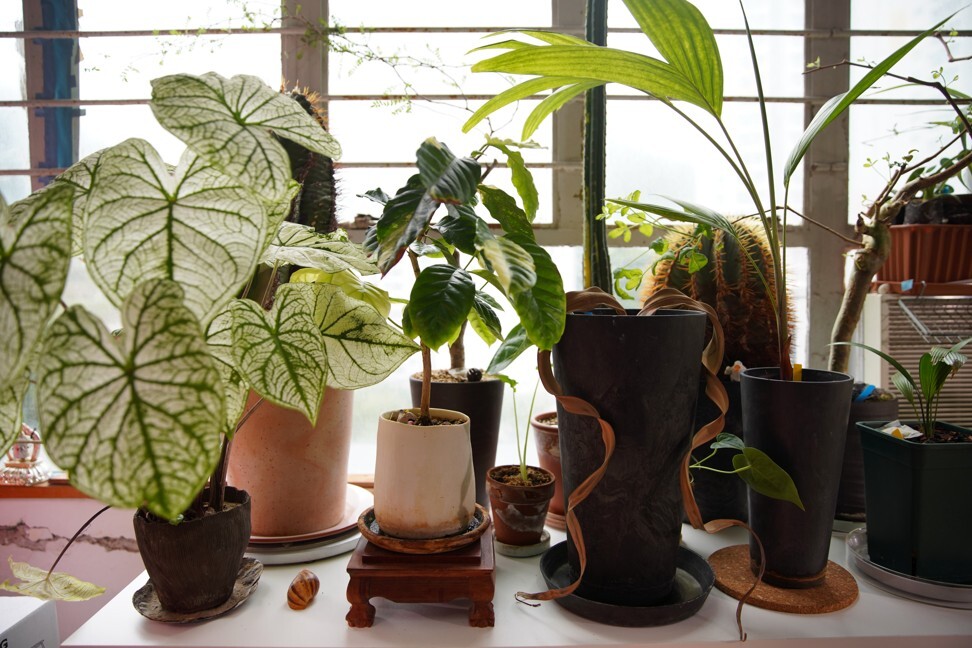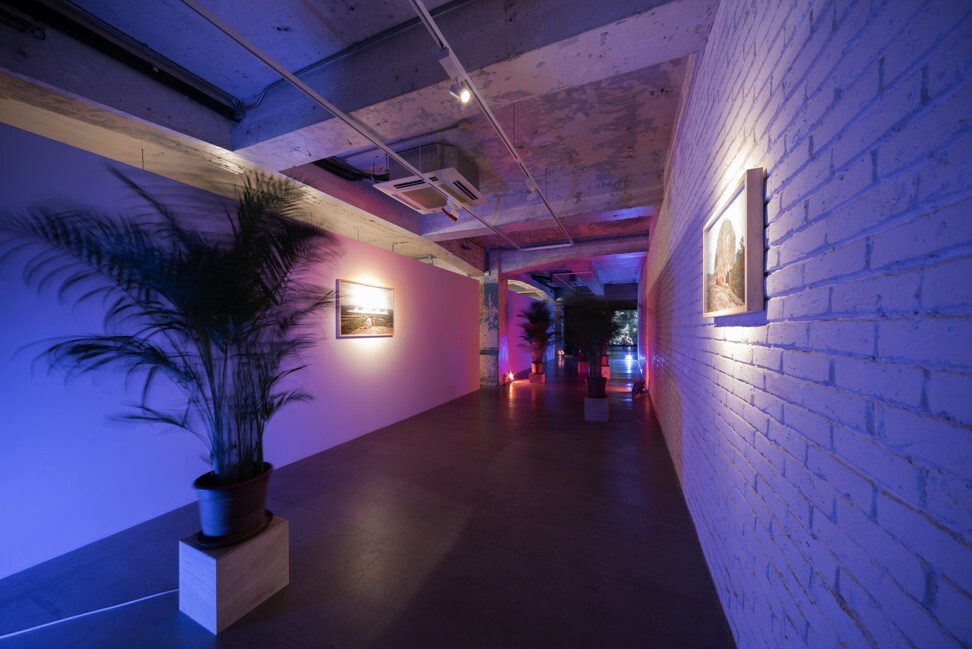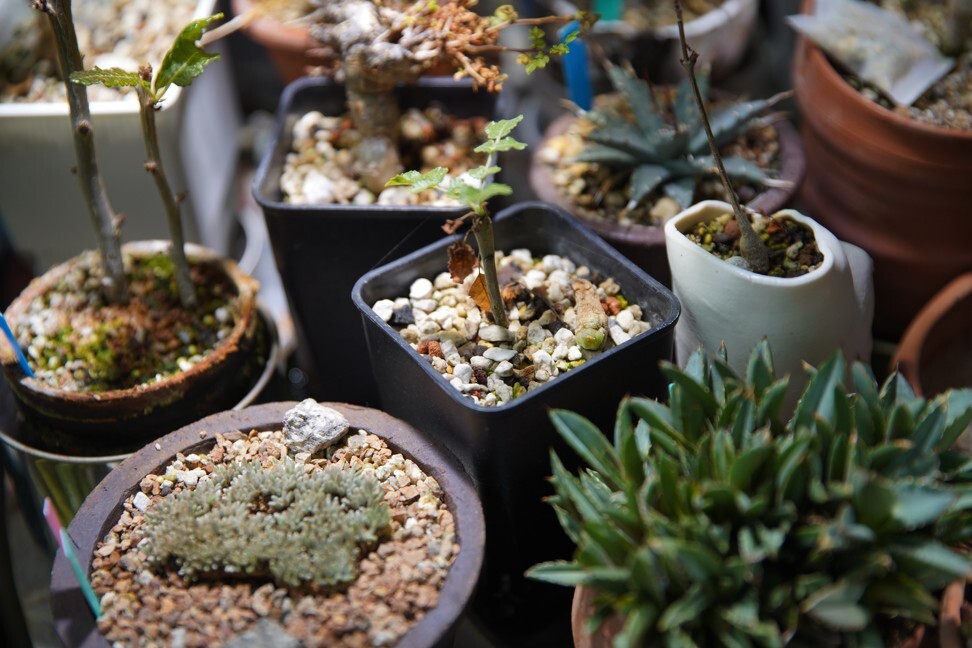
An artist’s love of plants helps him cope with anxiety: in his art, butterfly palms and Venus flytraps stand in lieu of people and challenging relationships
- Trevor Yeung uses his work to channel his struggles in connecting with his fellow humans, whether at art industry parties or in his personal relationships
- Some of his work can be seen as part of the group exhibition ‘Anonymous Society for Magick’ at Blindspot Gallery in Wong Chuk Hang, Hong Kong
Trevor Yeung’s workspace at Fo Tan in Hong Kong’s New Territories is so lush and green, it looks more like a botany lab than an artist’s studio. Where you would expect to find traces of paint and an assortment of brushes, there is soil and rocks. In lieu of a canvas, there is an abundance of flora and fauna.
“Some artists spend 15 years studying colour. I’ve spent most of my life studying animals and plants; they are my medium,” says the 31-year-old. “Sometimes, I think I’m just a grumpy old artist who likes to stay at home with his pets and plants.”
Yeung describes himself as both shy and socially awkward. His plants, he explains, help him connect better with humans.
“When I learn how to deal with plants, I learn how to deal with people.”

His connection, or lack of it, with others is a common theme that runs through some of his works. Mr butterflies at a waiting corridor (2012), for instance, channels his acute sense of dread and unease when he finds himself among strangers.

The artist has lined a corridor in the gallery with precisely placed plants lit with LED lights, symbolising people standing in the entrance area of a bar or nightclub. A kinetic element allows the plants to rotate ever so slightly as you walk by them, allowing for subtle engagement between plant and viewer – at a party, it’s the sort of attention that Yeung can just about handle.
Yeung says he doesn’t always go to parties, of which there are (unfortunately for him) plenty in the art world.
“I feel nervous when I go, I’m super conscious about myself. I’m more like a voyeur, but not creepy. I prefer to be an observer or caretaker. I think about how people interact with each other, it’s more of a social curiosity,” he says.


For the Lyon Contemporary Art Biennale in 2019 – an international contemporary art event that takes place every two years in Lyons, France – Yeung made another version of Mr Butterflies called Mx Butterflies’ Private Party.
For that, Yeung imagined yet another art world scenario in which people (represented by plants) hanging out on balconies look down at those who might be looking up (represented by people attending the art event) and wishing they were invited to the party.
Sometimes, the connection between viewer and art is not so obvious. For Cacti (2016–2019), he uses the husk of a dried blowfish to create a sculpture that looks like a cactus. Looks can be deceiving, though – it’s only when you take the time to look deeper and for longer that you realise it isn’t a plant at all. In the same way, while the artist insists he’s shy and awkward, we find him curious and engaging.
“I’m using illusion, to show how I want people to approach me [and my work] but also how I want to approach them,” says Yeung.

Yeung says the work was conceived because he wanted to create a worthy audience – one that would spend longer than five seconds looking at something, that wouldn’t just take the sculpture at face value.
“Sometimes the audience is spoiled. I don’t want that unbalanced relationship,” Yeung says. “You have to pay attention, then you’ll see something different. You get as much out of the experience as you put into it. That is the fairness I want my work to be about.”


When he was younger, the artist was only allowed to keep small pets because of how little living space he had in Hong Kong. He bought aquariums and stocked them with fish – he would buy more of them when he felt anxious about his exams. Later, at university, he switched to plants, as he wasn’t allowed to keep any animals with him. His first plants were “insect eating plants, like the Venus flytrap”.
While plants help him better understand social interactions, he says fish allowed him to take control of an environment (his aquariums in this case), which helped him to battle his fear of uncertainty.
“I see the aquarium as a type of functioning system, but also an artificial landscape. I can create a maze for my fish – guiding them through the tank, which I control. The way that I decorate it, it’s like guiding the fish through the tank, like how you would design a space in regards to how humans interact with it.”

For I could be a good boyfriend (2011), the artist created a piece of art involving a Venus flytrap. “That title was actually wrong,” Yeung notes. “I was not a good boyfriend then, it was all about control but, at that point in my life, that’s what I thought a good boyfriend should be. When I grew up, so did my work.”
Night Mushroom Colon (2020), which can be seen at Blindspot Gallery, was inspired by his fear of the dark. Yeung likens this installation, of mushroom-shaped night lights coming from a cluster of adaptors, to parents placing a night light in a room when children are scared of the dark.
“It’s a work that is standing with you, even in the darkest time,” says Yeung.

